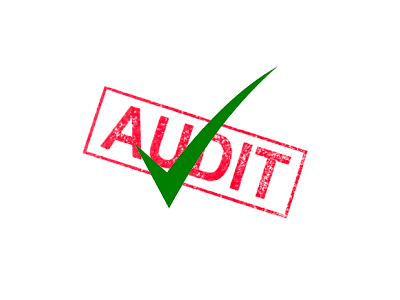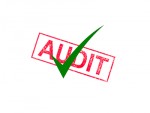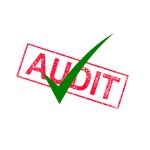Ongoing Accreditation: Best Practices for Remaining Audit-Ready & On-Site Preparation
Accredited laboratories face the task every one to two years of being re-assessed to maintain their accreditation (either by surveillance or full reassessment). During the re-assessment process, the laboratory will undergo a similar process as with the initial assessment, sans applications. The laboratory also has an opportunity to add or change any FOT’s on their Scope.
Experienced laboratories maintain an “audit-ready” approach to audit preparedness. Tyson Foods Safety & Laboratory Services has held ISO 17025 accreditation since 2002. Vanessa Cook, quality systems manager for Tyson Foods says, “Rather than preparing for audits, we have an expectation to be audit-ready at all times by implementing the many processes involved in the laboratory in a manner that is self-sustaining. We try to design our processes to have quality and compliance built into each step with acceptance criteria defined.” This approach has multiple advantages, including increased confidence in data and management systems between audits and decreased “crunch time” preparation as assessment dates approach. Treat audit preparation as a continuous process, not a singular event leading up to the audit itself. Cook also stresses the importance of staff preparation. “All team members have a role in driving continuous improvement, and how all lab tasks support the achievement of the quality objectives and the quality policy,” she says. “If team members understand the expectations of processes they participate in, then they are well prepared and able to be confident when audited.”
The overall tone and approach to assessments and assessor interaction, while often intangible, can be a key factor to assessment success. “Audit Attitude” guidance can be communicated in a variety of ways, from specific written policies and SOP’s, to informal incorporation into training programs. Accredited laboratories are advised to have a defined and consistent culture around how personnel interact with assessors throughout the process. Benjamin Howard, laboratory director at Certified Laboratories of the Midwest (an ANAB Accredited facility), begins this coaching process at the time of hire. “For a new person coming into our operation, we train them to be open and receptive to the assessor and their questions,” he says. “It can take a bit of experience, but our seasoned employees can navigate the nuances of the assessor interaction. The key is to answer questions directly and provide information in a clear and confident manner.” Howard also remarks on the advice he gives employees when they are unsure: “They should not guess. What is important in those cases is to acknowledge your uncertainty and then to demonstrate to the auditor that you know where to get that information if and when you need it.”
Internal organization and communication is critical to maximizing time with your assessor. Common best practices include:
- Hold a pre-audit status meeting with all staff that might be in contact with the assessor. Discuss any key focus areas and remind them about your organizations philosophy on quality and interaction with assessors. Many laboratories will have specific training and procedures on how to behave during an audit.
- Review previous audits, both external and internal, and be prepared for scrutiny on past findings. For multi-site laboratories, communicate with sister-operations to understand any findings or areas of focus they encountered previously.
- If applicable, have a corporate quality representative on-site for all audits. This person ideally knows the intricacies and details of both the ISO 17025 standard and internal policies and systems. They can aide in making this portion of the assessment swift and, in the case of multi-site facilities, consistent. This isn’t to say that your corporate representative should handle the entirety of your audit, local and user-based interaction is a necessary component of an on-site assessment.
- To the extent possible, have pertinent documents and records pulled, organized and in order prior to assessor arrival. Organization of your program is a key indicator for the assessor and can help instill confidence in them about your operation.
- If there are known gaps in your system, make sure corrective actions are already in place. A common area assessors will examine initially is customer complaints. Ensure that complaints escalate through the corrective action program and are documented when appropriate.
- Structuring the on-site assessment should include allowance for access to the technical and quality managers as well as technicians, analysts and even administrative personnel who handle samples routinely throughout the process. Most assessors are sensitive to operational laboratories and do their best not to impede the functionality of the laboratory during an assessment. An open and cooperative discussion with your assessor about ongoing projects and workflow needs will help your assessment go smooth while meeting operational deadlines.
While no amount of preparation can guard from the unknown, it is the preparation that equips a laboratory to deal with unknowns that inevitably crop up during an audit. Peter Dragasakis, quality manager at Eurofins Microbiology Laboratories is the corporate representative onsite during all audits of the wide network of facilities. “When gaps arise during audit preparation, or even during an on-site assessment, be upfront about them and work with your assessor to show how you are addressing the problem.” Common issues such as high turnover rates can expose training record gaps in an operation, and will likely result in a finding (deficiency). Dragasakis reminds his team: “The assessor is not here to harm us; we are their customer. They are here to ensure we meet requirements and identify gaps to improve our overall systems.” Technician interviews are another common area of gap exposure. Dragasakis encourages honest and specific communication. “First, we try to calm the nerves of the technicians, especially if they are newer to the audit process,” he says. “We let them know it is 100% acceptable for them to answer an assessors question with ‘I don’t know’, as long as it is followed with insight on where they would go to find the answer. We also train our technicians to answer the question asked, but not to volunteer more information than requested.”
Bring It All Together
For laboratories that are in the early stages of accreditation, or considering becoming accredited, the following expert advice can be key to a successful outcome:
- Critically evaluate the resources required to initiate and maintain accreditation
- Consider the use of a consultant to get you started
- Stay organized throughout the application and assessment process
- Remain open and cooperative with the assessor and answer the questions asked
- Emphasize “audit readiness” as a continual process
- Reinforce the importance of the quality system to gain buy in from employees; start at the time of hire
- Follow the best-practice audit preparation tips
- It’s okay to say “I don’t know”, as long as you know where to find the answer
In Part II of this article, we will explore what comes after the on-site assessment and provide practical user-based advice for preparing a response, common areas of non-conformance, and future changes to the ISO 17025 Standard.






